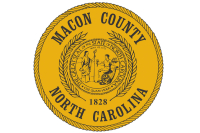Built for growth that hasn’t come, costly Whittier sewer system struggles to stay viable
Back about a decade ago, setting the table for economic growth around Whittier seemed something of a no-brainer — the casino in Cherokee was booming, and it seemed inevitable that businesses such as restaurants and hotels would clamor for space in the gateway area along the U.S. 441 corridor.
Meanwhile, residents in the unincorporated community were complaining about failing septic systems. Whittier lies along the Tuckasegee River, saddling the borders of Jackson and Swain counties. There were some reports of straight-piping sewage into the river.
The nearby Church of God’s Western North Carolina Assembly wanted to expand. The septic system at Smokey Mountain Elementary School, a few miles along U.S. 441 in Jackson County, no longer could serve the number of students required. And the Eastern Band of Cherokee Indians was completing a recreation complex and was intent on building a golf course not far away.
Ten years and some $5 million later, a wastewater treatment plant now serves all those needy entities.
Blame the economy, the parties involved certainly do; but the bottom line?
• Assessments about growth turned out to be wrong, at least to date. There are just 14 customers being served by a plant with annual operating costs of roughly $180,000 a year. The plant is capable of treating 200,000 gallons of wastewater a day — and the treatment facility was built with future expansion in mind.
Related Items
• Jackson County residents continue to kick in $100,000 a year to subsidize the system. The county agreed to help pay for the system for three years, and has one more year to go.
• The Eastern Band also made the same deal, but the tribe — citing an unfinalized budget, and a different fiscal-year budget than other local governments, among other reasons — hasn’t yet made a payment. It is now $200,000 behind on its $300,000 pledge. The first $100,000 of the tribe’s commitment is in their current 2010-11 budget, which began Oct. 1. A payment is expected soon, Vice Chief Larry Blythe has assured parties involved.
• The Whittier Sanitary District, a three-member board that continues to oversee water for the community and is tasked with getting more customers for the wastewater treatment plant, instead hasn’t even met basic requirements the state sets for governing boards.
A letter last month to the district from the Department of State Treasurer complained that no budget has been adopted, the district operated at a net loss with actual expenses exceeding budgeted amount, board members were reportedly receiving utility services free of charge, an audit hadn’t been done as required, and the financial officer wasn’t bonded as the law stipulated. The district has since cut out the perks for board members but is still working at coming into compliance on the other matters.
All of this has created a hardship for the Tuckaseigee Water and Sewer Authority (TWASA), which became the reluctant manager of Whittier’s sewer system. TWASA was formed to oversee water and sewer needs for Jackson County’s residents, with the idea that one large entity would do a better job than the county and towns (there are four in Jackson) working alone could.
“It’s at the point we will have to decide whether to keep operating the plant, or turn it over to the Whittier Sanitary District,” said Joe Cline, executive director of TWASA.
That decision, he said, will be made around the beginning of the new year.
When the subsidies from the county and tribe dry up, the 14 current customers won’t be enough to cover the system’s costs.
Bill Gibson, executive director of the Southwestern Development Commission, a regional council for the state’s seven westernmost counties, is a dealmaker. And he was the man who helped put together the money needed to make the wastewater treatment plant a reality.
This was a complicated project, one of the most intricate deals Gibson has been involved in since taking the lead role for the commission in 1976. There were numerous private and public parties involved. Millions of dollars were needed.
Land, owned by the Jackson County Economic Development Commission, was available in an industrial park in Whittier. And in 2001, the N.C. Rural Economic Development Center agreed to give the project a $3 million grant.
Getting the necessary permits to build took two years. Among the delays — an archaeological site and the need to tunnel pipe under the Tuckasegee River.
During this time, prices on building supplies went up. The grant wasn’t large enough to cover the bids coming in. More money was sought and received from Jackson County, the Eastern Band and the Church of God. Total, Jackson and the Eastern Band invested about $750,000 each into the project. The Church of God, about $500,000. The N.C. Rural Economic Development Center added $200,000 more to its original grant amount, Gibson said.
For Jackson County’s part, Manager Kenneth Westmoreland said, the elementary school’s failing septic system presented a problem that had to be solved. Gibson estimated it would have taken more than a $1 million for the county to buy land and put in a new septic field and sewer system.
“Even with a new septic field, you are buying time, but it would eventually fail, too,” he said.
Though additional money was made available, some things had to be cut to make the sewage treatment plant a go.
“Some of the reason we don’t have the customers we thought is that we had to cut out some lines,” Gibson said.
The initial estimates were for 40 customers to tap in. Of those, 10 or 15 weren’t close enough to tie on to the system after all. Another six or so, Gibson said, had done something else while the plant was being built, such as put in their own septic systems.
Westmoreland recently noted the Whittier Sanitary District hasn’t been very aggressive in recruiting new customers.
There are a lot of ‘ifs’ before the building of a wastewater treatment plant in Whittier can be deemed a failure or success. If the economy rebounds, if investors see a reason to build on U.S. 441, if residents in Whittier tap in to the system, the plant will serve the purpose intended. Everything is in place for that to happen — in addition to sewer lines, there is also water, natural gas and high-speed fiber optic.
But 14 customers? That won’t turn the system into what was envisioned: self sustainable and justifiable.









